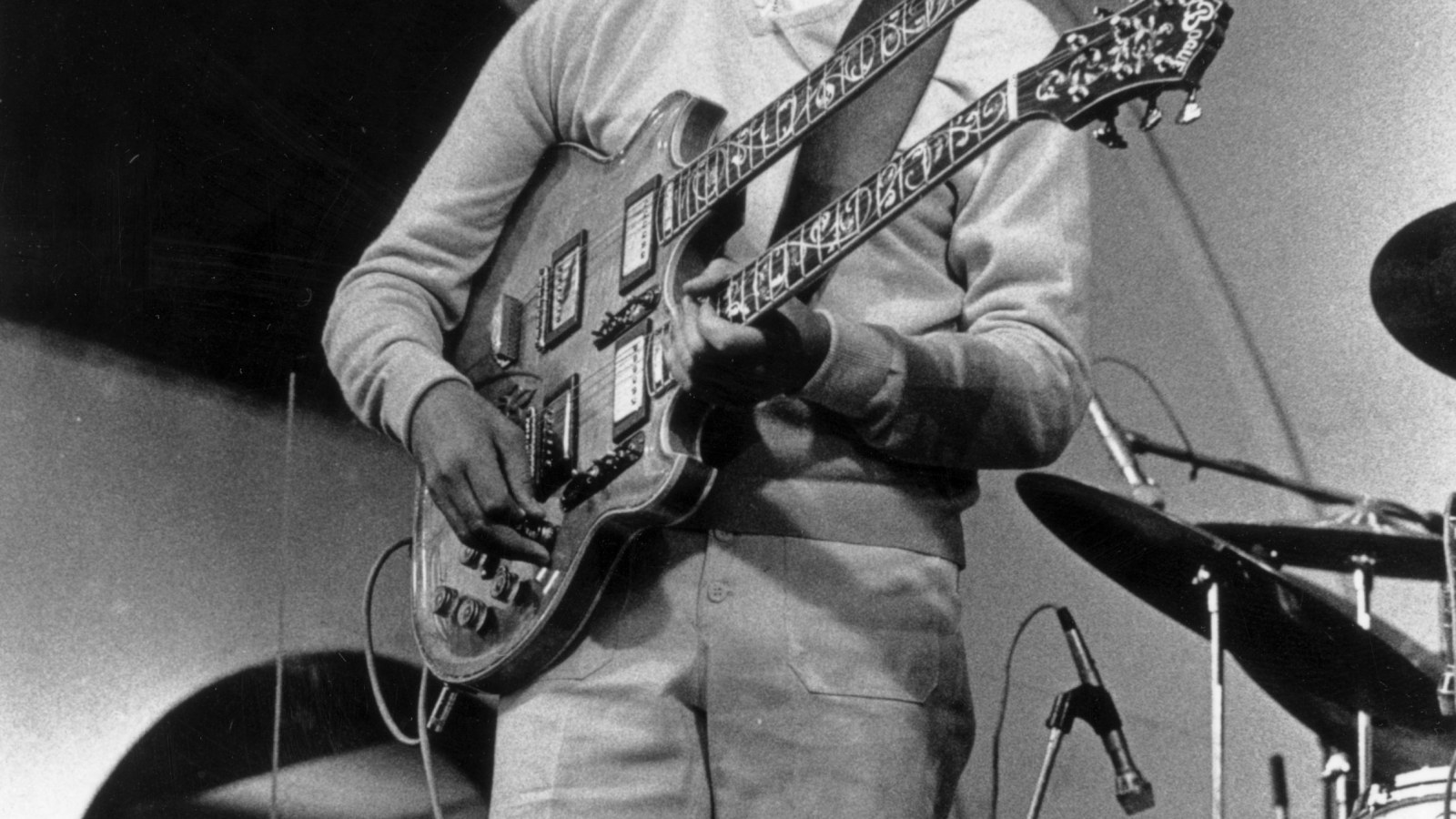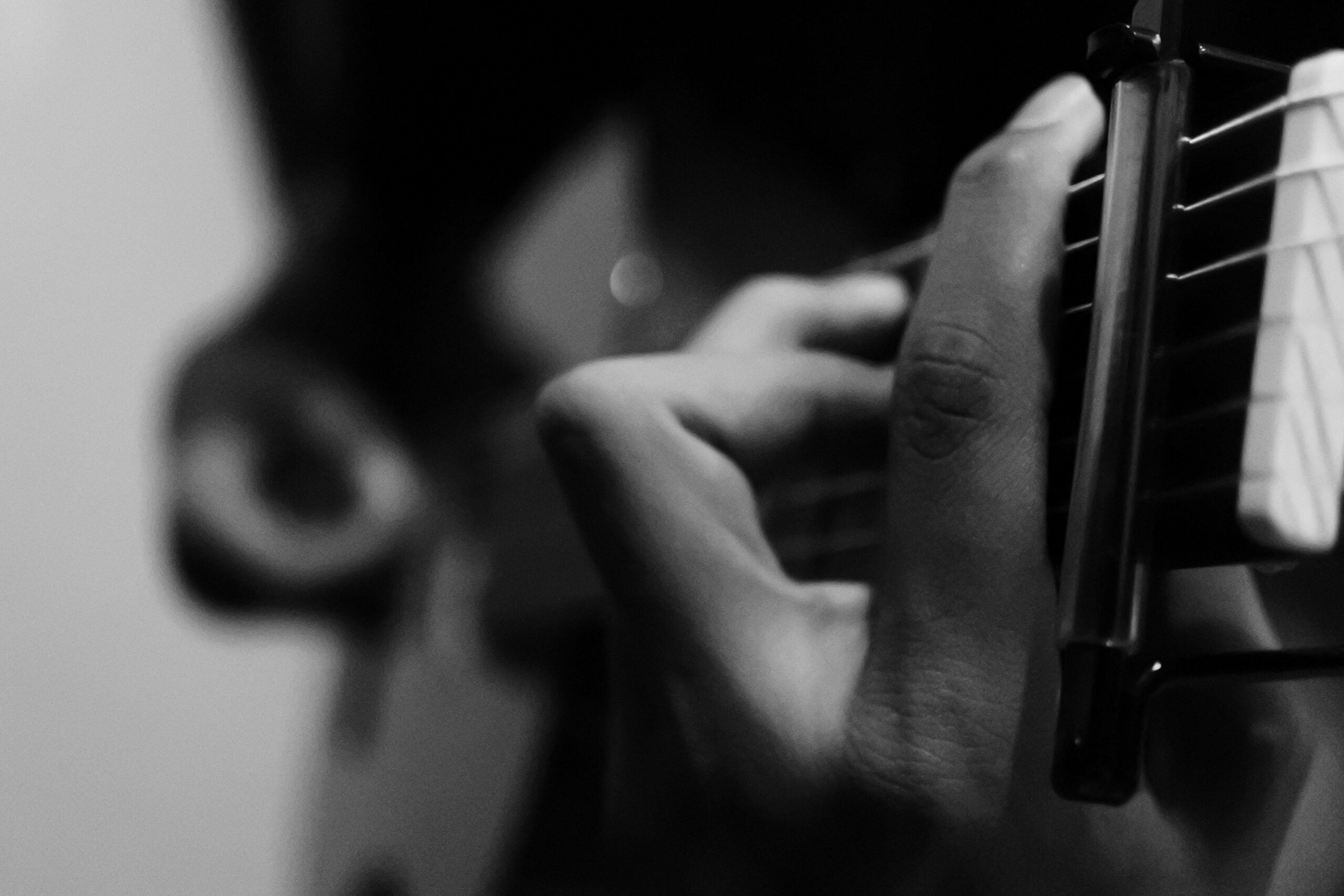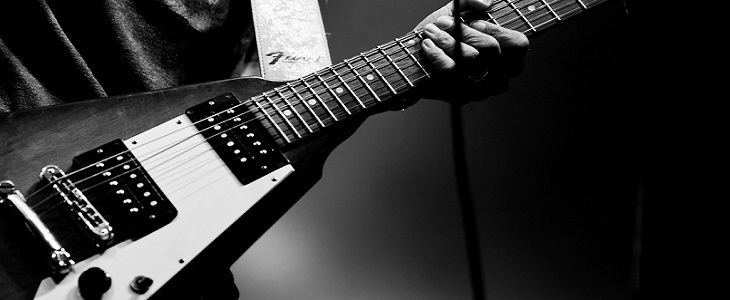A while ago we looked at how to make music with the Lydian scale in this lesson, so let’s continue in the same vein with the incredibly versatile Dorian Mode. I was lucky enough to have Guthrie Govan as a teacher for an entire semester at the ACM in Guildford, and as a master of so many different styles, he was able to give us a different angle on modes. I liked the way he always gave a very solid musical example of whatever he was trying to explain so that we were able to hear it in context. I’ll try to do the same here as we take a look at the multipurpose Dorian Scale.
The Dorian Scale is used a lot, much more than you would probably realize, and in a variety of styles. Guthrie would try to get across to us that while you might associate a scale with a certain type of sound or playing, there’s a whole lot more to it than that. I think the scale he used as an example was actually the Phrygian Scale, which he played as you expect to hear a Phrygian Scale, and then played it in completely different styles to the point where it didn’t sound like the Phrygian Scale at all, but he was still using the exact same notes.
A Word about Modes
As you may (or may not) know, the Dorian Scale is the second mode of the Major Scale. We’ll use A Dorian as our scale of choice for this lesson, and A Dorian is the second mode in the key of G Major.
If we start G Major on A, this is what happens:

We now have a new chord sequence where A is the root, and A Minor is the ‘home chord’. This is the A Dorian Mode: a minor scale which is heavily used in blues and rock, and a lot of other styles as we’re about to see.

Here’s a useful pattern for A Dorian. What you see here is the ‘Clapton’ box for the A Minor Pentatonic Scale with the intervals 2 and 6 added to make it A Dorian. Strum an Am or Am7 chord before playing this scale to make sure you’re hearing it right. The 2 and the 6 are what make the Dorian Scale sound Dorian so make sure you make a mental note of where they are.
Dorian Chord Progression
Let’s try the Dorian Scale out over a series of backing tracks in different styles. The chord progression for every backing track is the same:
Am | Em | G | D | Am | CMaj7 | G | D
Notice how I took the chords from the key (of G major) and arranged them to make a progression whose home chord is now A Minor; this means you don’t have to change scale and can play A Dorian freely over the progression, although bear in mind which chords you’re playing over so as to direct your lines to at least the root notes of those chords.
Backing Tracks
Backing Track One features a simple finger-picked acoustic guitar backing for you to try out the Dorian Scale over. As the acoustic guitar provides plenty of melody, you won’t need to get too busy here as a few carefully placed notes will sound amazing.
Backing Track Two is a kind of, dare I say it… almost a pop idea featuring a piano and somewhat reminiscent of a certain Robbie Williams track you’ve probably heard more than a few times. Again, you won’t need to get too busy here either, so pay attention to your phrasing and note choice.
Backing Track Three has an 80s feel to it, and a kind of Lionel Ritchie meets Level 42 meets Duran Duran vibe. As it’s the 80s you have permission to get a lot busier but don’t overdo it.
Backing Track Four takes us in a completely different direction with a Bossa Nova meets Coldplay type vibe where you can get away with being both busy and playing a few choice notes in the right places.
I’ve kept these backing tracks fairly short for you to structure your solo so that it has some kind of discernible opening, middle part and closing, which is an especially useful skill to have for session work. You should bear this in mind when working with any backing track as while wailing over one aimlessly for ten minutes can be fun, you’re not really working on phrasing and structure which are of course the hallmarks of a great guitar solo.



